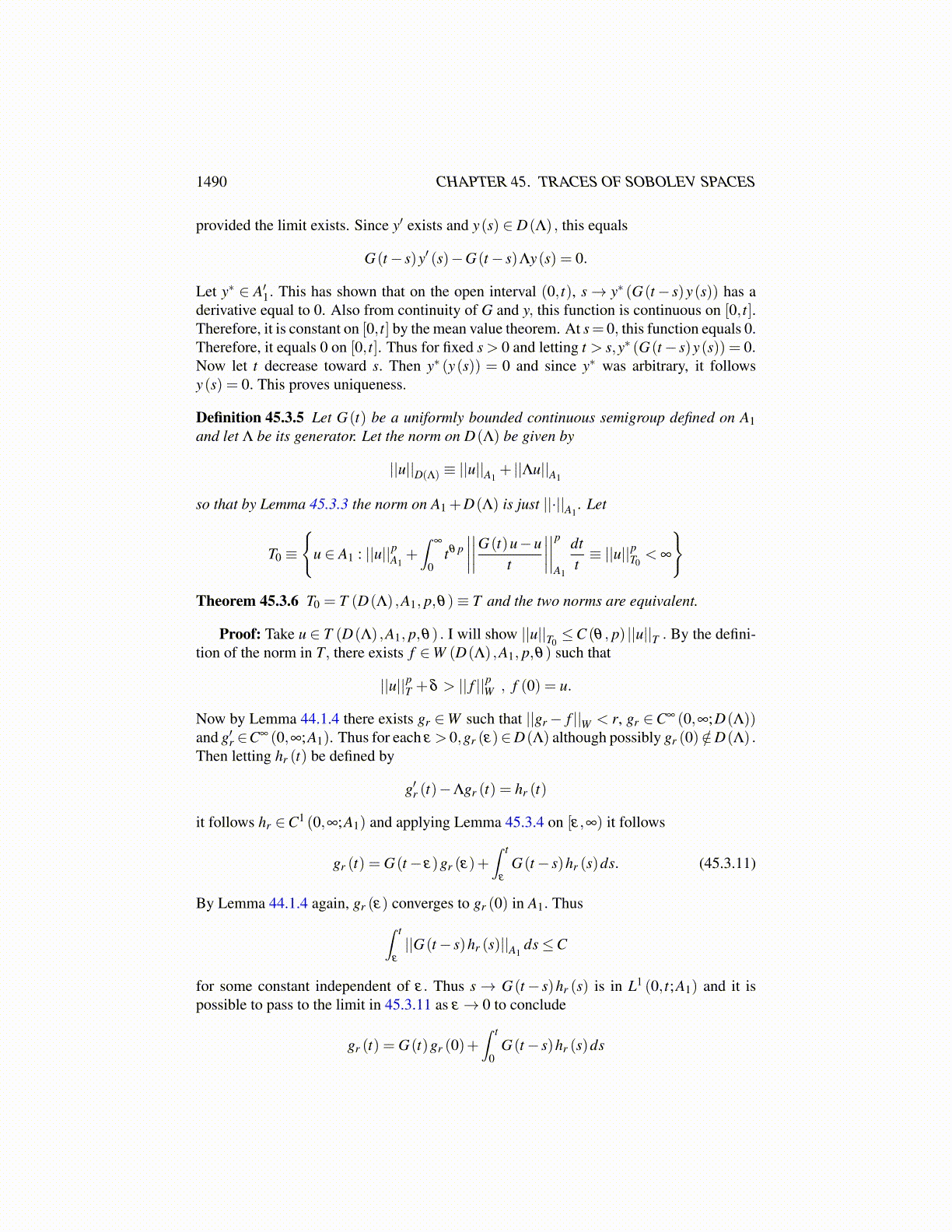
1490 CHAPTER 45. TRACES OF SOBOLEV SPACES
Lemma 45.3.4 Let Λ be the generator of G(t) and let t → g(t) be in C1 (0,∞;A1). Thenthere exists a unique solution to the initial value problem
y′−Λy = g, y(0) = y0 ∈ D(Λ)
and it is given by
y(t) = G(t)y0 +∫ t
0G(t− s)g(s)ds. (45.3.8)
This solution is continuous having continuous derivative and has values in D(Λ).
Proof: First I show the following claim.Claim:
∫ t0 G(t− s)g(s)ds ∈ D(Λ) and
Λ
(∫ t
0G(t− s)g(s)ds
)= G(t)g(0)−g(t)+
∫ t
0G(t− s)g′ (s)ds
Proof of the claim:
1h
(G(h)
∫ t
0G(t− s)g(s)ds−
∫ t
0G(t− s)g(s)ds
)
=1h
(∫ t
0G(t− s+h)g(s)ds−
∫ t
0G(t− s)g(s)ds
)=
1h
(∫ t−h
−hG(t− s)g(s+h)ds−
∫ t
0G(t− s)g(s)ds
)
=1h
∫ 0
−hG(t− s)g(s+h)ds+
∫ t−h
0G(t− s)
g(s+h)−g(s)h
−1h
∫ t
t−hG(t− s)g(s)ds
Using the estimate in Theorem 19.14.3 on Page 577 and the dominated convergence theo-rem the limit as h→ 0 of the above equals
G(t)g(0)−g(t)+∫ t
0G(t− s)g′ (s)ds
which proves the claim.Since y0 ∈ D(Λ) ,
G(t)Λy0 = G(t) limh→0
G(h)y0− y0
h
= limh→0
G(t +h)−G(t)h
y0
= limh→0
G(h)G(t)y0−G(t)y0
h(45.3.9)